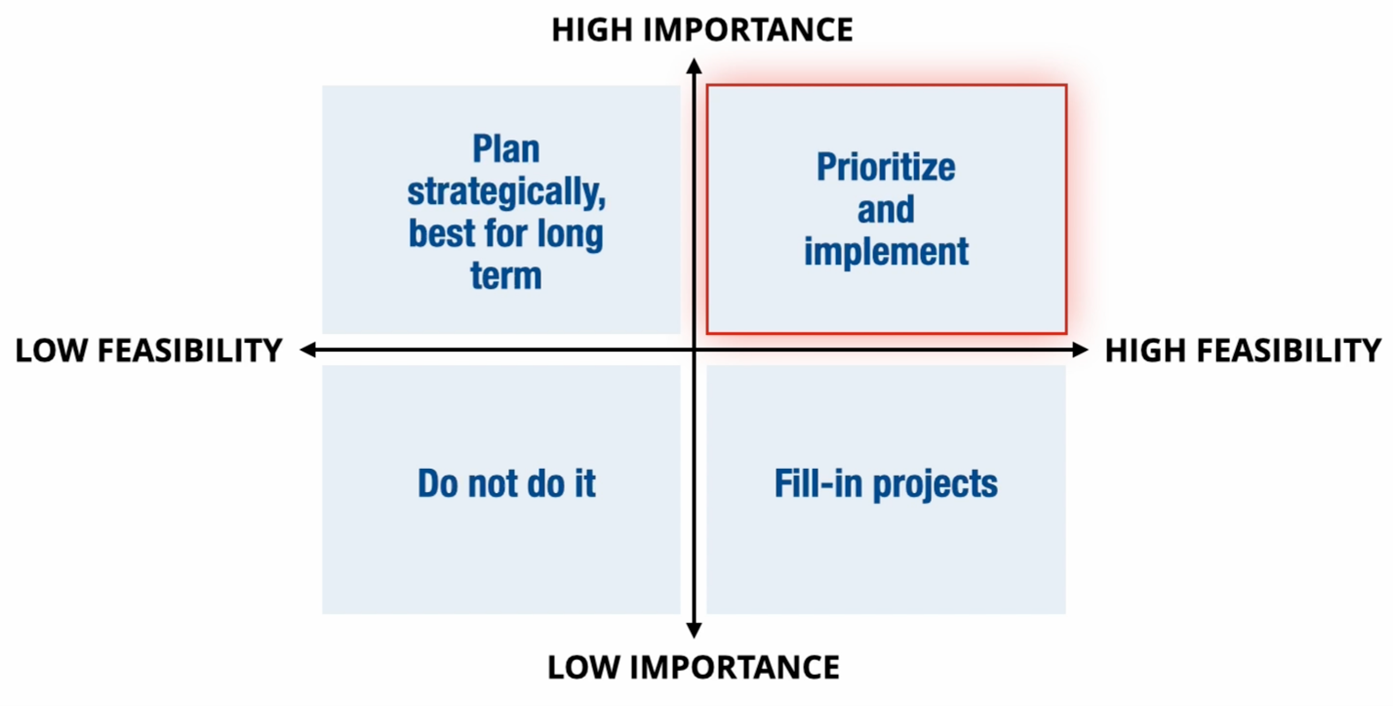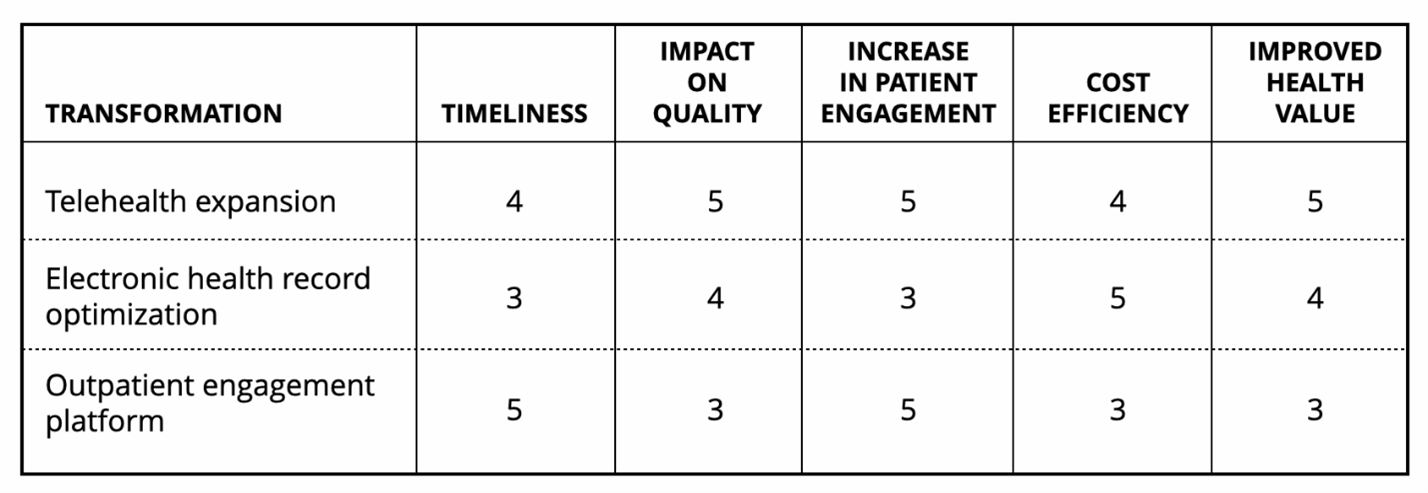The research you do at the start of the innovation process can yield dozens or hundreds of data points, including insights from end users, operational and financial stakeholders, and organizational decision makers. Defining the problem you are trying to solve can be chaotic, time consuming, and of limited value—unless you have a process for analyzing the data. So how, in a sea of promising ideas and valid concerns, can you pinpoint the right problem or problems to solve?
As part of her Addressing Challenges lab, MHCI instructor Rhonda Manns, MBA, BSN, RN delineates a set of tools to help innovators find the right problem. They offer a systematic approach to help you decide how to prioritize needs, and how to be as sure as possible that you and your colleagues are thinking in a direction that will be useful to end users and appeal to higher-ups.
In this short video, MHCI instructor Rhonda Manns, MBA, BSN, RN delineates a set of tools to help innovators find the right problem.
A prioritization matrix is a way of visually assessing which ideas, features, and products represent an essential investment of resources; which insights may lead to longer-term goals; and which can be left out of a project roadmap.
The matrix allows you to map ideas in terms of two independent variables. For example:
- Impact vs. effort.
- Importance to users vs. feasibility to implement.
- Effort vs. return on investment (ROI).
Use this process to determine which ideas will represent the highest impact with the least cost. Or alternately, which ideas are likely to be so impactful that they are worth the investment in time, effort, and money to pursue.

The example above maps feasibility and importance. Ideas in the top right quadrant represent the best value for the organization. And those in the lower left can be set aside, at least for the moment.
Using the prioritization matrix to organize insights that come out of the discovery process can help you frame a problem that focuses on ideas that are within your capacity and that can also effectively meet user needs.
An impact assessment takes this one step further, allowing you to evaluate ideas you think will be most impactful in terms of key metrics for success. By totaling those scores, you can obtain a ranked list that will help you further hone your sense of the problem.
To use this tool, determine the key metrics for an innovation to be successful in your organization. For example:
- Does it align with organizational priorities?
- Is it timely?
- Does it improve quality of care for patients?
- Does it increase patient engagement?
- Is it likely to produce revenue—or at least be revenue neutral?
Together with colleagues, score each idea in terms of each of those metrics. Then, by comparing the total scores for each idea, you can launch a productive, informed conversation about where to focus your effort.

Once you have roughed out a path, the final step is to make sure you are headed in the right direction. Reach out to end users and stakeholders with the results of your analysis to determine whether you are solving the right problem, and whether potential solutions are likely to be feasible to implement and sustainable. You might ask them, for example:
- How well do our results reflect your experience?
- How impactful will a solution that is focused in this area be for you and for others?
- What kinds of context and constraints are we missing, that we might need to plan around?
- What would you change?
Answers to these questions from people with on-the-ground experience and decision-making authority can help you more closely pinpoint the focus of your problem definition, leading to small changes in key areas that can have large impacts downstream.
The results of the discovery phase of the innovation process can be overwhelming, leaving innovators with myriad insights, ideas, and points of significant pain. Having the means to organize and prioritize those findings can help teams move forward in a manageable, data-informed way. And it can help you narrow the scope of a problem to what is most feasible and important to solve.
Throughout our courses in Health Care Innovation, MEHP Online offers techniques to manage this and every phase of the innovation project. Learn more about our programs and how they can help you extend your innovation expertise. Download this PDF job aid to help you practice prioritization and validation.

